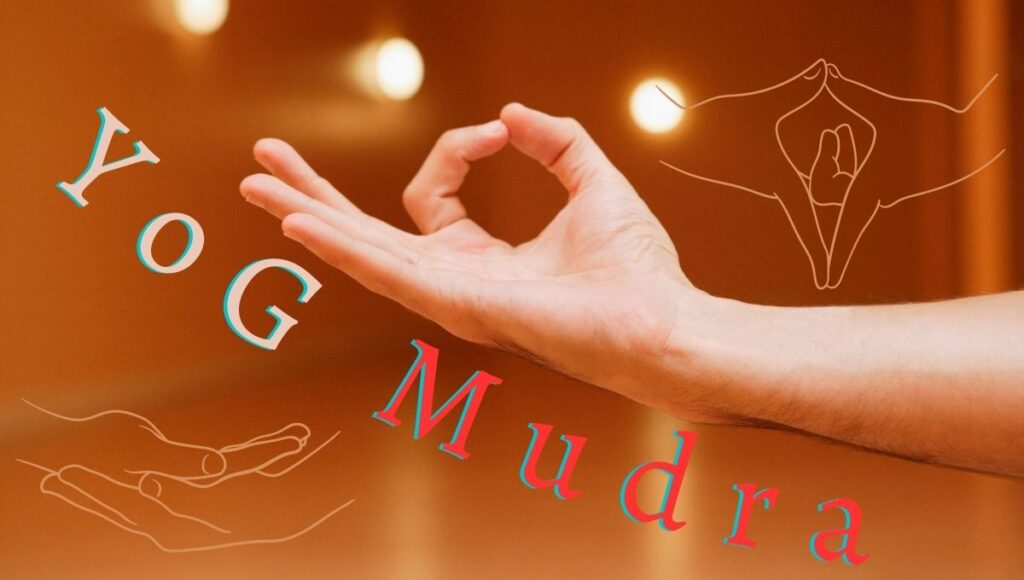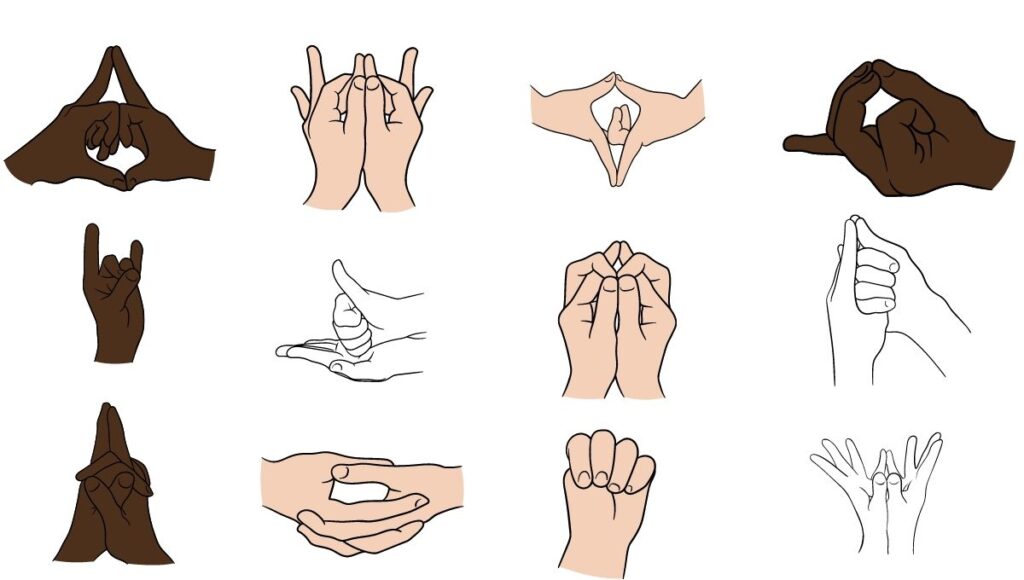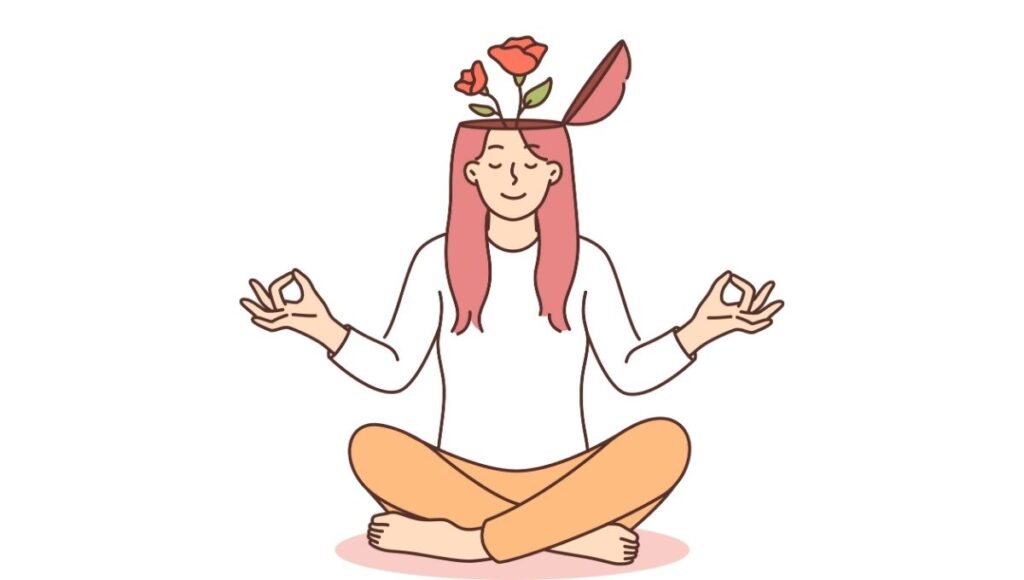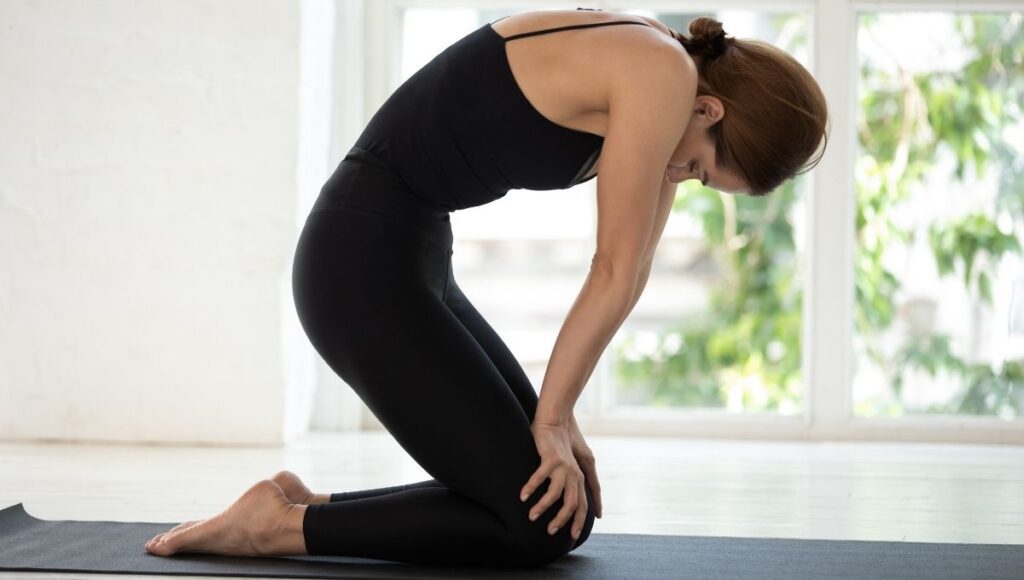Yog Mudra: A Powerful Tool for Spiritual Awakening in 15 minutes a day

Do you want to experience a higher level of consciousness and bliss? Do you want to unlock your true potential and purpose in life? Do you want to transform your body and mind with a simple yet powerful technique?
If you answered yes to any of these questions, then you are in the right place. In this blog post, I will introduce you to yog mudra, a sacred and symbolic gesture of the hands and fingers that can influence the flow of energy and consciousness in your body and mind.
Yog mudra is not just a physical movement or posture. It is a spiritual practice that can help you awaken your inner wisdom, intuition, creativity, compassion, joy, and peace. It can also help you heal your physical, mental, emotional, and spiritual issues by balancing your five elements: earth, water, fire, air, and ether.
Sounds amazing, right? But how does yog mudra work? How can you practice it effectively? And what are the benefits of yog mudra for spiritual awakening?
In this blog post, I will answer all these questions and more. I will also share with you some of the most effective yog mudras for spiritual awakening and how to practice them in 15 minutes a day. By the end of this blog post, you will have a clear understanding of what yog mudra is, how it can help you achieve spiritual awakening, and how to use it as a powerful tool for your personal growth and transformation.
Are you ready to embark on this journey with me? Then let’s get started!
What is yog mudra? 🤷♂️
Yog mudra is derived from two Sanskrit words: yog meaning union or connection, and mudra meaning seal or gesture. Yog mudra is therefore a way of connecting or sealing your energy or consciousness with your hands and fingers. 🤲
According to yoga philosophy, your hands and fingers are extensions of your five elements: earth (ring finger), water (little finger), fire (thumb), air (index finger), and ether (middle finger). By forming different shapes and combinations with your hands and fingers, you can activate, balance, or harmonize these elements in your body and mind. 💫
Yog mudra is also a way of communicating with your subconscious mind, which is the source of your habits, emotions, memories, and beliefs. By using yog mudra, you can send positive messages to your subconscious mind and reprogram it for your highest good. You can also access your superconscious mind, which is the source of your higher self, soul, or spirit. By using yog mudra, you can align yourself with your true nature and purpose and experience spiritual awakening. 🌟
Yog mudra is not a new invention or discovery. It is an ancient and universal practice that has been used by various cultures and traditions for thousands of years. You can find yog mudra in Hinduism, Buddhism, Jainism, Sikhism, Christianity, Islam, Judaism, and many other religions and spiritual paths. You can also find yog mudra in art, music, dance, martial arts, and healing modalities. Yog mudra is a natural and innate expression of your body and mind. 🌍
What are the types of yog mudra? 🙋♂️
There are many types of yog mudra, but they can be broadly classified into five main categories: hasta (hand), mana (mind), kaya (body), bandha (lock), and adhara (base). Each category has its own characteristics and effects on your body-mind system. Let’s take a look at each one briefly: 🧐
Hasta mudra (hand gesture) 👋

Hasta mudra is the most common and popular type of yog mudra. It involves forming different shapes and combinations with your hands and fingers to influence the flow of energy and consciousness in your body and mind. Hasta mudra can be practiced anytime and anywhere, with or without other yoga practices. Hasta mudra can help you improve your physical health, mental clarity, emotional stability, and spiritual awareness.
Some examples of hasta mudra are:
- Gyan mudra: This is the most widely used yog mudra. It involves touching the tip of your thumb with the tip of your index finger, while keeping the other three fingers straight. This mudra stimulates the air element in your body and mind, which is associated with knowledge, wisdom, creativity, communication, and intuition. This mudra can help you enhance your learning ability, memory power, concentration, focus, and mental peace.
- Shunya mudra: This is also known as the gesture of emptiness or void. It involves bending your middle finger and pressing it with the base of your thumb, while keeping the other three fingers straight. This mudra activates the ether element in your body and mind, which is associated with space, sound, vibration, expansion, and transcendence. This mudra can help you improve your hearing ability, speech clarity, throat health, self-expression, and spiritual connection.
- Dhyana mudra: This is also known as the gesture of meditation or contemplation. It involves placing your hands on your lap or knees, with your right hand on top of your left hand, palms facing up, and tips of the thumbs touching each other. This mudra creates a circuit of energy between your hands and balances the masculine and feminine aspects of your being. This mudra can help you calm your mind, relax your body, deepen your meditation, and access higher states of consciousness.
- Anjali mudra: This is also known as the gesture of prayer or reverence. It involves bringing your palms together in front of your heart center or chest level, with fingers pointing up. This mudra symbolizes gratitude, respect, love, and devotion. This mudra can help you open your heart, heal your emotions, harmonize your relationships, and connect with the divine.
- Kundalini mudra: This is also known as the gesture of energy or power. It involves interlocking your fingers, with the left thumb on top of the right thumb, and extending the index fingers up. This mudra activates the fire element in your body and mind, which is associated with heat, light, transformation, and action. This mudra can help you awaken your kundalini energy, which is the dormant potential at the base of your spine, and raise it to the crown of your head, where it merges with the universal consciousness.
These are just some examples of hasta mudra. There are many more that you can explore and practice according to your needs and goals.
Mana mudra (mind gesture)

Mana mudra is a type of yog mudra that involves using your eyes, ears, nose, tongue, and lips to influence the flow of energy and consciousness in your body and mind. Mana mudra can help you control your senses, calm your mind, purify your energy channels, and enhance your perception and intuition. Mana mudra can be practiced along with other yoga practices, such as pranayama (breathing techniques), dharana (concentration), and dhyana (meditation). Mana mudra can help you achieve mental clarity, emotional balance, and spiritual insight.
Some examples of mana mudra are:
- Shambhavi mudra: This is also known as the gesture of the third eye or the eyebrow center. It involves gazing at the point between your eyebrows, where the pineal gland is located. This mudra stimulates the ajna chakra, which is the energy center of intuition, vision, imagination, and psychic abilities. This mudra can help you activate your third eye, enhance your inner vision, and access higher dimensions of reality.
- Bhramari mudra: This is also known as the gesture of the bee or the humming sound. It involves closing your ears with your thumbs, placing your index fingers on your forehead, and the rest of your fingers on your eyes. Then you make a humming sound like a bee with your mouth closed. This mudra creates a vibration in your head, which soothes your nervous system, relaxes your brain, and clears your mind. This mudra can help you reduce stress, anxiety, anger, insomnia, and depression.
- Khechari mudra: This is also known as the gesture of the tongue or the sky. It involves rolling your tongue back and up to touch the roof of your mouth or the soft palate. This mudra connects your tongue with your brain, which activates the secretion of amrita or nectar, which is a blissful substance that nourishes your body and mind. This mudra can help you increase your longevity, vitality, immunity, and happiness.
- Nasikagra mudra: This is also known as the gesture of the nose tip or the nostril. It involves gazing at the tip of your nose with your eyes slightly crossed. This mudra balances the ida and pingala nadis, which are the energy channels that correspond to the left and right hemispheres of your brain. This mudra can help you harmonize your logical and creative faculties, improve your concentration, focus, and memory power.
- Jihva bandha mudra: This is also known as the gesture of the tongue lock or the root of the tongue. It involves pressing your tongue against the back of your lower teeth and drawing it back to touch the base of your throat. This mudra seals the energy in your throat chakra, which is the energy center of communication, expression, and creativity. This mudra can help you improve your speech quality, vocal health, and artistic skills.
These are just some examples of mana mudra. There are many more that you can explore and practice according to your needs and goals.
Kaya mudra (body gesture)

Kaya mudra is a type of yog mudra that involves using your whole body or parts of it to form different shapes and postures to influence the flow of energy and consciousness in your body and mind. Kaya mudra can help you improve your physical health, flexibility, strength, balance, and coordination.
Kaya mudra can also help you activate and align your chakras, which are the energy centers that regulate your physical, mental, emotional, and spiritual functions. Kaya mudra can be practiced as part of yoga asana (posture) practice or as a standalone practice. Kaya mudra can help you achieve physical wellness, mental calmness, and spiritual harmony.
Some examples of kaya mudra are:
- Viparita karani mudra: This is also known as the gesture of the inverted lake or the legs up the wall pose. It involves lying on your back with your legs raised up against a wall or a support. This mudra reverses the flow of blood and energy in your body, which rejuvenates your organs, tissues, and cells. This mudra can help you reduce stress, fatigue, insomnia, headache, and varicose veins.
- Manduki mudra: This is also known as the gesture of the frog or the frog pose. It involves sitting on your heels with your knees wide apart and placing your hands on the floor between your legs. Then you lower your head and touch your chin to the floor. This mudra stimulates the manipura chakra, which is the energy center of power, confidence, and willpower. This mudra can help you boost your self-esteem, courage, and determination.
- Matsya mudra: This is also known as the gesture of the fish or the fish pose. It involves lying on your back with your legs straight and placing your hands under your hips. Then you lift your chest and head off the floor and tilt your head back to touch the crown of your head to the floor. This mudra activates the vishuddha chakra, which is the energy center of purity, truth, and expression. This mudra can help you cleanse your throat, thyroid, and vocal cords.
- Garuda mudra: This is also known as the gesture of the eagle or the eagle pose. It involves standing on one leg and wrapping your other leg around it. Then you extend your arms in front of you and cross them at the elbows. Then you bend your arms and wrap them around each other so that your palms touch each other. This mudra balances the ida and pingala nadis, which are the energy channels that correspond to the left and right sides of your body and mind. This mudra can help you harmonize your masculine and feminine energies, improve your balance, concentration, and focus.
- Simha mudra: This is also known as the gesture of the lion or the lion pose. It involves sitting on your heels with your knees wide apart and placing your hands on your knees. Then you open your mouth wide and stick out your tongue as far as you can. Then you exhale forcefully through your mouth and make a roaring sound like a lion. This mudra releases tension from your face, neck, and chest. This mudra can help you express yourself freely, release negative emotions, and enhance your confidence and charisma.
These are just some examples of kaya mudra. There are many more that you can explore and practice according to your needs and goals.
Bandha mudra (lock gesture)

Bandha mudra is a type of yog mudra that involves contracting or locking certain muscles or organs in your body to control or redirect the flow of energy and consciousness in your body and mind. Bandha mudra can help you conserve, amplify, and circulate your prana or life force in your body and mind.
Bandha mudra can also help you awaken your kundalini energy, which is the dormant potential at the base of your spine, and raise it to the crown of your head, where it merges with the universal consciousness. Bandha mudra can be practiced along with other yoga practices, such as pranayama (breathing techniques), asana (posture), and meditation. Bandha mudra can help you achieve physical vitality, mental clarity, and spiritual ecstasy.
Some examples of bandha mudra are:
- Mula bandha: This is also known as the root lock or the pelvic floor lock. It involves contracting and lifting the muscles of your pelvic floor, which include the anus, the genitals, and the perineum. This bandha seals the energy at the base of your spine, which is the location of the muladhara chakra, which is the energy center of stability, security, and survival. This bandha can help you strengthen your pelvic floor, prevent urinary and reproductive problems, and activate your kundalini energy.
- Uddiyana bandha: This is also known as the abdominal lock or the navel lock. It involves exhaling all the air from your lungs and pulling your abdomen in and up towards your spine. This bandha seals the energy in your abdomen, which is the location of the manipura chakra, which is the energy center of power, confidence, and willpower. This bandha can help you improve your digestion, metabolism, immunity, and self-esteem.
- Jalandhara bandha: This is also known as the throat lock or the chin lock. It involves inhaling deeply and holding your breath, then lowering your chin to touch your chest and lifting your chest to meet your chin. This bandha seals the energy in your throat, which is the location of the vishuddha chakra, which is the energy center of purity, truth, and expression. This bandha can help you cleanse your throat, thyroid, and vocal cords.
- Maha bandha: This is also known as the great lock or the combination of all three locks. It involves performing mula bandha, uddiyana bandha, and jalandhara bandha simultaneously while holding your breath. This bandha seals the energy in your entire body and creates a powerful surge of prana that travels from the base of your spine to the crown of your head. This bandha can help you balance all your chakras, harmonize all your elements, and experience a state of bliss and union with the divine.
These are just some examples of bandha mudra. There are many more that you can explore and practice according to your needs and goals.
Adhara mudra (base gesture)

Adhara mudra is a type of yog mudra that involves using your feet or toes to form different shapes and combinations to influence the flow of energy and consciousness in your body and mind. Adhara mudra can help you connect with the earth element, which is the source of stability, security, and survival. Adhara mudra can also help you ground yourself, release excess energy, and balance your root chakra.
Adhara mudra can be practiced along with other yoga practices, such as asana (posture), pranayama (breathing techniques), and meditation. Adhara mudra can help you achieve physical health, mental calmness, and emotional stability.
Some examples of adhara mudra are:
- Pada bandha: This is also known as the foot lock or the arch lift. It involves lifting the inner arches of your feet while pressing the outer edges and the balls of your feet firmly on the ground. This mudra creates a dome-like shape in your feet, which supports your ankles, knees, hips, and spine. This mudra can help you improve your posture, balance, alignment, and mobility.
- Padanguli mudra: This is also known as the toe gesture or the toe spread. It involves spreading your toes apart as wide as you can and then curling them back in. This mudra stimulates the nerve endings in your toes, which connect to various organs and systems in your body. This mudra can help you improve your circulation, digestion, respiration, and immunity.
- Prapada mudra: This is also known as the heel gesture or the heel press. It involves pressing your heels together and lifting your toes off the ground. This mudra activates the muladhara chakra, which is the energy center of stability, security, and survival. This mudra can help you strengthen your pelvic floor, prevent urinary and reproductive problems, and activate your kundalini energy.
- Gaja karani mudra: This is also known as the elephant gesture or the elephant trunk pose. It involves standing on your toes and bending forward from your hips. Then you place your hands on the floor and lift your heels off the ground. Then you swing your legs back and forth like an elephant’s trunk. This mudra massages your internal organs, especially your liver, spleen, kidneys, and intestines. This mudra can help you detoxify your body, improve your metabolism, and enhance your vitality.
- Padma mudra: This is also known as the lotus gesture or the lotus pose. It involves sitting cross-legged with your spine erect and placing your hands on your knees. Then you curl your toes under and touch them to each other. Then you lift your heels off the ground and bring them close to your navel. This mudra resembles a lotus flower, which symbolizes purity, beauty, and enlightenment. This mudra can help you open your heart, heal your emotions, harmonize your relationships, and connect with the divine.
These are just some examples of adhara mudra. There are many more that you can explore and practice according to your needs and goals.
What are the benefits of yog mudra for spiritual awakening?

Yog mudra is a powerful tool for spiritual awakening, which is the process of transcending the ego and realizing one’s true nature as pure awareness and bliss. By practicing yog mudra regularly and correctly, you can experience many benefits for your spiritual awakening, such as:
- You can increase your awareness of yourself, your body, your mind, your emotions, and your surroundings. You can become more mindful, present, and conscious of every moment of your life. You can also develop a sense of detachment, witnessing, and observation of yourself and others. 👁️
- You can balance and harmonize your five elements: earth, water, fire, air, and ether. You can also balance and align your seven chakras: root, sacral, solar plexus, heart, throat, third eye, and crown. You can also balance and harmonize your masculine and feminine energies, your left and right brain hemispheres, and your ida and pingala nadis. You can achieve a state of equilibrium, harmony, and integration within yourself and with the universe. ⚖️
- You can activate and awaken your kundalini energy, which is the dormant potential at the base of your spine. You can raise it to the crown of your head, where it merges with the universal consciousness. You can experience a surge of energy, light, heat, and vibration in your body and mind. You can also experience various phenomena such as visions, sounds, smells, tastes, and sensations that transcend the ordinary senses. You can achieve a state of ecstasy, bliss, and union with the divine. 🌈
- You can access higher states of consciousness such as alpha, theta, delta, and gamma waves. You can also access higher dimensions of reality such as astral, causal, and spiritual planes. You can also access higher aspects of yourself such as your higher self, soul, or spirit. You can experience a state of expansion, transcendence, and liberation from the limitations of time, space, and causality. 🚀
- You can develop and enhance your psychic abilities such as clairvoyance, clairaudience, clairsentience, claircognizance, telepathy, psychometry, precognition, retrocognition, remote viewing, astral projection, and lucid dreaming. You can also develop and enhance your spiritual gifts such as healing, channeling, mediumship, intuition, creativity, compassion, and joy. You can experience a state of empowerment, expression, and service to yourself and others. 🎁
These are just some of the benefits of yog mudra for spiritual awakening. There are many more that you can discover and enjoy as you practice yog mudra regularly and correctly.
How to use yog mudra for spiritual awakening?

Now that you know what yog mudra is, what are the types of yog mudra, and what are the benefits of yog mudra for spiritual awakening, you might be wondering how to use yog mudra for spiritual awakening. Well, the answer is simple: just do it!
But seriously, there are some tips and guidelines that you can follow to make your yog mudra practice more effective and enjoyable. Here are some of them:
- Choose a comfortable and quiet place to practice yog mudra. You can sit on a chair, cushion, or mat with your spine erect and your eyes closed or slightly open. You can also lie down on your back or stand up with your feet shoulder-width apart. You can also practice yog mudra in nature, such as in a park, garden, or forest. You can also practice yog mudra in a sacred space, such as in a temple, church, or mosque.
- Select a yog mudra that resonates with your intention or goal for spiritual awakening. You can refer to the list of recommended yog mudras for spiritual awakening in this blog post or do your own research online or from books. You can also consult a qualified yoga teacher or therapist for guidance. You can also follow your intuition and experiment with different yog mudras until you find the one that works best for you.
- Perform the selected yog mudra by placing your hands, fingers, feet, toes, eyes, ears, nose, tongue, lips, or body in the appropriate position. You can hold the yog mudra for as long as you feel comfortable or until you experience a shift in your energy or awareness. You can also combine the yog mudra with breathing techniques, mantras, visualizations, or affirmations to enhance its effects.
- Observe the sensations, thoughts, emotions, and insights that arise during and after practicing the yog mudra. Be aware of any changes in your physical, mental, emotional, or spiritual state. You can also journal your experiences or share them with others who are interested in yog mudra and spiritual awakening.
These are just some tips and guidelines that you can follow to use yog mudra for spiritual awakening. There are many more that you can learn and apply as you practice yog mudra regularly and correctly.
Conclusion 🙏

Yog mudra is a powerful tool for spiritual awakening that can help you transcend your ego and realize your true nature as pure awareness and bliss. By practicing yog mudra regularly and correctly, you can experience many benefits for your physical health, mental clarity, emotional stability, and spiritual awareness.
In this blog post, I have introduced you to what yog mudra is, what are the types of yog mudra, what are the benefits of yog mudra for spiritual awakening, and how to use yog mudra for spiritual awakening. I hope this blog post has been informative and helpful for you.
If you have any questions, comments, or feedback about this blog post or about yog mudra in general, please feel free to leave them in the comments section below or contact me through my social media channels. I would love to hear from you and connect with you.
Thank you for reading this blog post and for joining me on this journey of yog mudra and spiritual awakening. I wish you all the best in your practice and in your life.
Namaste

FAQs
What is the difference between yog mudra and yoga asana?
Yog mudra is a type of yoga practice that involves using your hands, fingers, eyes, ears, nose, tongue, lips, or body to form different shapes and combinations to influence the flow of energy and consciousness in your body and mind. Yoga asana is another type of yoga practice that involves using your whole body to perform various physical postures to improve your health, flexibility, strength, balance, and coordination. Yog mudra and yoga asana can be practiced separately or together, depending on your needs and goals.
How often should I practice yog mudra for spiritual awakening?
There is no fixed rule or guideline on how often you should practice yog mudra for spiritual awakening. It depends on your personal preference, availability, and intention. However, some general tips are to practice yog mudra regularly and consistently, preferably every day or at least a few times a week.
You can also practice yog mudra at specific times of the day, such as in the morning or evening, or during special occasions, such as during full moon or new moon. You can also practice yog mudra for a specific duration, such as for 5 minutes, 15 minutes, or 30 minutes, or until you feel a change in your energy or awareness.
Which yog mudra is best for spiritual awakening?
There is no single or definitive answer to this question. Different yog mudras have different effects and benefits for your spiritual awakening. You can choose a yog mudra that resonates with your intention or goal for spiritual awakening, such as enhancing your intuition, vision, creativity, compassion, joy, peace, or bliss.
You can also choose a yog mudra that suits your personality, temperament, mood, or condition. You can also experiment with different yog mudras until you find the one that works best for you.
Can I practice yog mudra with other people?
Yes, you can practice yog mudra with other people who are interested in yog mudra and spiritual awakening. You can practice yog mudra with your friends, family members, partners, colleagues, or classmates. You can also practice yog mudra with a group of like-minded people who share your passion and vision for spiritual awakening. You can also practice yog mudra with a teacher or a guide who can instruct you and support you in your practice. Practicing yog mudra with other people can enhance your experience and results by creating a collective energy field and a sense of community and connection.
What are the risks or side effects of practicing yog mudra for spiritual awakening?
Practicing yog mudra for spiritual awakening is generally safe and beneficial for most people. However, there are some risks or side effects that you should be aware of and avoid. Some of them are:
- Practicing yog mudra without proper guidance or instruction from a qualified teacher or therapist. This can lead to incorrect or inappropriate performance of the yog mudra, which can cause physical injury, mental confusion, emotional imbalance, or spiritual disturbance.
- Practicing yog mudra without proper preparation or warm-up of your body and mind. This can lead to stiffness, soreness, cramps, or spasms in your muscles, joints, or organs. It can also lead to fatigue, drowsiness, headache, or nausea in your body and mind.
- Practicing yog mudra without proper awareness or respect of your limits and boundaries. This can lead to overexertion, strain, pain, or damage in your body and mind. It can also lead to ego inflation, delusion, obsession, or addiction in your body and mind.
- Practicing yog mudra without proper integration or grounding of your energy and consciousness. This can lead to imbalance, instability, disconnection, or dissociation in your body and mind. It can also lead to hallucinations, paranoia, psychosis, or schizophrenia in your body and mind.
To avoid these risks or side effects, you should always practice yog mudra with caution, care, and common sense. You should also consult your doctor or health care provider before starting or continuing any yog mudra practice if you have any medical condition or concern.
